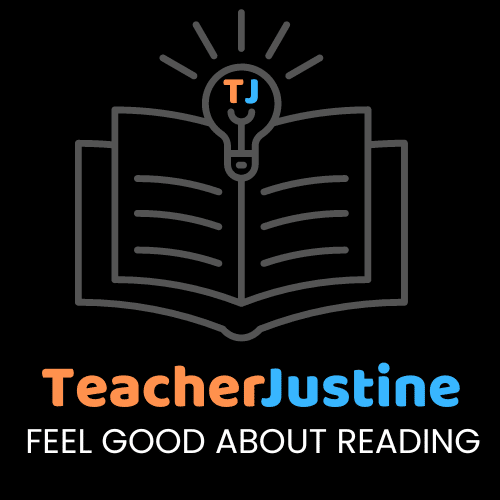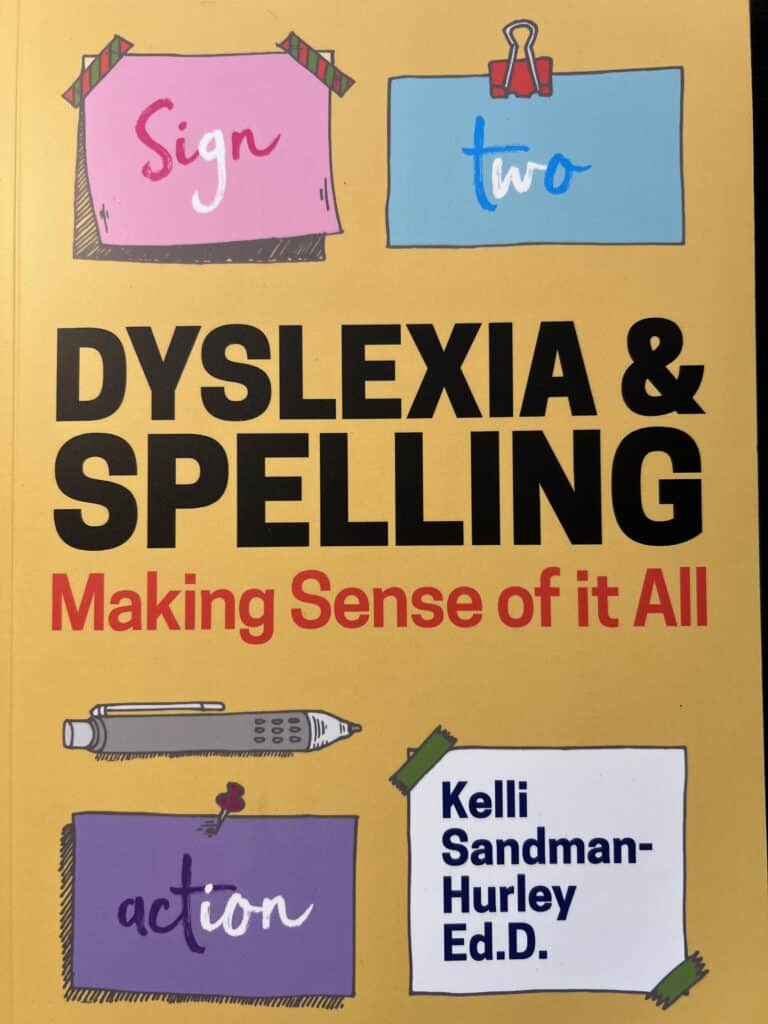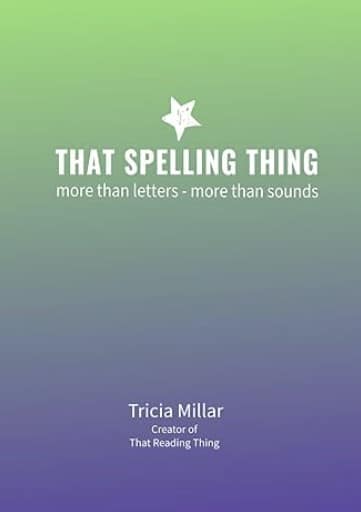Teacher Justine contains affiliate links and is a member of the Amazon Services LLS Associates Program. If you make a purchase using one of these Amazon links, I may receive compensation at no extra charge to you. See my disclosure policy for more information.
How I Overcame EBLI Confusion With These 5 Subtle Changes
Are you just beginning to use EBLI in your reading and spelling practice and have questions, or have you been using it for a while and loving it, only to stumble, and suddenly become confused again?
Don’t worry, you are not alone. This just happened to me. I have been using EBLI in my tutoring practice for almost two years with great success, and then I started learning about Structured Word Inquiry and became confused again.
Whether you are a homeschool mom using EBLI with your child, a parent interested in EBLI, or a full time tutor using EBLI, you will probably experience confusion at some point in your learning about speech-to-print methods.
As an EBLI tutor who is constantly learning about English spelling, I have experienced confusion several times and I can confidently say these 5 changes in my thinking helped me overcome my unease and stay confident in the EBLI method.
Take a deep breath, open your mind, and let’s overcome confusion using EBLI.
How I Overcame EBLI Confusion With These 5 Subtle Changes

1. Trust The Process
We are all told to “trust the process” at the beginning of our training when confusion and doubt are stretching our brains as we try to learn something new.
This confusion happens because for the first time we are looking at something familiar from a new perspective.
All our lives, most of us have thought that the printed letters and words are the place to start when learning to read. That seems logical. Here are the letters, let’s learn what they “say” and build them up into a word.
But now we are learning that there is another way to look at it. What if we start with the spoken word and from there, match the sounds to the letters?
This is a subtle but important difference. It simplifies everything for the teacher and the child. But, it can be hard to make the jump as we grapple with this paradigm shift.
Look at the picture above. What do you see? How can a rock float in the air? Turn your head upside down and look at the picture again. Now what do you see? You just went through a paradigmatic shift. Now, trust the process.
Trusting the process is the best way to overcome this initial confusion with EBLI.
2. Forget How To Spell (For A Minute)
A common thing that happens when you start teaching EBLI is that you briefly forget how to spell. In EBLI, you say a word and segment all the sounds and then match the sounds to spellings. This is harder than it sounds.
An example I saw in a Facebook group by a new EBLI trainee was that when she tried to spell words that she normally had no problem spelling, like Portugal, she suddenly could not do it when she got to the /ch/ sound.
She said she wanted to spell Portugal as Porchoogul.
I too experienced this at the beginning of my training. Words that I spelled easily all my life suddenly vanished from my brain and I couldn’t spell them using this method.
If this happens to you, don’t panic. As you practice this method, your brain quickly adapts and begins to see new patterns. Continuing with the Portugal example, you will notice that the letter t represents the /ch/ sound in many words:
- unfortunately
- creature
- centuries
- eventually
Allowing yourself to forget how to spell as your brain creates new patterns will help with this initial confusion or cognitive dissonance.
3. Loosen Up About Syllables
Syllable division can cause confusion when you start training with EBLI. Most of us have learned a few syllable division rules along the way to becoming a teacher or tutor. And it’s not how EBLI does it.
One of the first things you learn to do in EBLI is to divide the word the way it comes out of your mouth. This is often not where the dictionary divides words into syllables and it’s not how we were taught in other trainings.
This can cause you to tighten up and resist. Especially when you are asked to accept a syllable beginning with a double consonant as in these examples:
disappearing
dis a ppear ing
unappealing
un a ppeal ing
associate
a sso ci ate
appreciate
a ppre ci ate
rabbit
ra bbit
The best way to deal with this is to loosen up and go with the flow. You probably did not learn syllable division when you learned to read and it wasn’t a problem. And the kids I tutor do not seem to mind at all either.
Devin Kearns and Victoria Waley have a simple strategy for students to identify syllables: “Every part (syllable) has a vowel, and every part has to look OK.”
What do you think? Can you begin a syllable with a double consonant? Does that look OK?
Deciding that it is OK to begin a syllable with a double consonant helped me overcome this syllable division confusion.
4. Avoid Rabbit Holes By Remembering What Beginning Readers Need
I recently heard an interview of Kelli Sandman-Hurley and was so intrigued that I bought her book Dyslexia & Spelling: Making Sense Of It All.
This is an easy to read resource on how English spelling is actually structured. It turns out that English spelling can not be understood by just matching the sounds coming out of our mouths to the graphemes.
As I was reading some fascinating things about the intersection of phonology, morphology, and etymology, I felt my EBLI confusion coming on fast and disorienting me.
Is a sounds-based approach enough to understand English spelling? Apparently not if you want to know why some English words are spelled the way they are.
I felt myself going down a rabbit hole into the world of Structured Word Inquiry (SWI). SWI is fascinating and shows the truth about English spelling. But is it necessary for beginning readers?
I overcame my confusion by remembering the basics that EBLI is grounded in:
- Beginning readers need us to help them focus on the sounds of the language
- They need to link every single letter within a word to every nuance in its spoken form
- Too much information about roots and base words might not be helpful yet
Coming back to what beginning readers truly need got me through this wobble, but my curiosity about SWI was truly sparked.
5. Do What Makes The Most Sense
The beauty of EBLI is that it simplifies a complex situation by saying that every sound in a word can be represented by its spelling.
But that is not the whole story. For the whole story, read Beneath the Surface of Words by Sue Scibetta Hegland.
Teaching the true underlying structure of English through word investigations will depend on time and the interest of the student. But for those who are interested, it will definitely help them connect the dots between seemingly unrelated words.
For example the unusual spelling of the word “sign” makes sense when you realize that the letter g is there to connect the word to the word family that includes:
- signify
- significance
- signature
- signage
- insignia
- design
- designation
- resign
- resignation
- assign
- assignment
One way to deal with this conundrum between simplification and the true structure, is to use what Tricia Millar from That Reading Thing and That Spelling Thing calls “everyday morphology”.
This is when the tutor works from the naturally spoken syllables, but then you “nudge for meaning” if it is obvious. This means you break the word at a point of meaning instead of sound.
For example, in my EBLI manual the word ‘interchangeable” is broken into syllables as “in ter chan gea ble”. But in this case, I think it is better to nudge for meaning and split it like this: “in ter change a ble” because change is a word I know, but not “chan”.
Another example is “millionaire”. EBLI breaks it like this: “mill io naire” but I like “mill ion aire” better because kids know the word million.
Doing what makes sense, based on the word and the student I am with, has helped me through this confusion between keeping it simple or digging deeper to investigate the true structure of words.
FAQs
Does EBLI teach spelling rules?
No, EBLI does not teach spelling rules. Instead, tutors guide the child to discover spelling patterns by showing the tendencies through word sort activities.
Does teaching multiple spelling patterns at once cause confusion?
No, teaching multiple spelling at once does not cause confusion for the students. By doing this EBLI teaches all of the code earlier and accelerates outcomes.
What are the 3 components of EBLI?
The three components of EBLI are spelling, reading, and handwriting. Reading is taught through spelling and handwriting.
Does EBLI teach syllable division rules?
No, EBLI does not teach syllable division rules. Instead tutors model and practice how to read a word from left to right and to flex vowel sounds to arrive at the correct pronunciation. Through practice, students learn likely syllable division breaks.
Conclusion
EBLI is an amazing program because it simplifies the complexities of learning to read and spell words in the English language.
However, learning anything new causes confusion and EBLI is no exception.
To be clear, I am talking about the confusion the parent, teacher or tutor feels as they learn this new system. It usually makes sense to the kids right away.
Trusting the process, being flexible with syllable division, and doing what makes the most sense with the word and the student in front of me are the top subtle changes I made in my thinking to overcome my EBLI confusion.
To learn more and purchase the books I mentioned, browse these titles:
Dyslexia & Spelling
by Kelli Sandman-Hurley
This is an easy to read resource for a teacher, tutor, or parent who wants to learn how to investigate words with their child.
It also shows you how to analyze your child’s writing to understand what they are struggling with. I recommend this book!
That Spelling Thing
by Tricia Millar
This book was a life saver during my confusion about whether I should actually be teaching word parts instead of word sounds. I highly recommend it.
Beneath The Surface Of Words
by Sue Scibetta Hegland
After reading this book, you will never say “English is crazy” again. Instead you will become fascinated by the elegance of English spelling. I truly recommend this book.
Next Steps:
For ideas on how to help your child spell better, read “Child Struggling To Spell: How A Parent Can Help”.
To learn about EBLI tutoring for you child, contact me or schedule a Free Tutoring Assessment/Consultation.



